SUMMARY
This is AI generated summarization, which may have errors. For context, always refer to the full article.
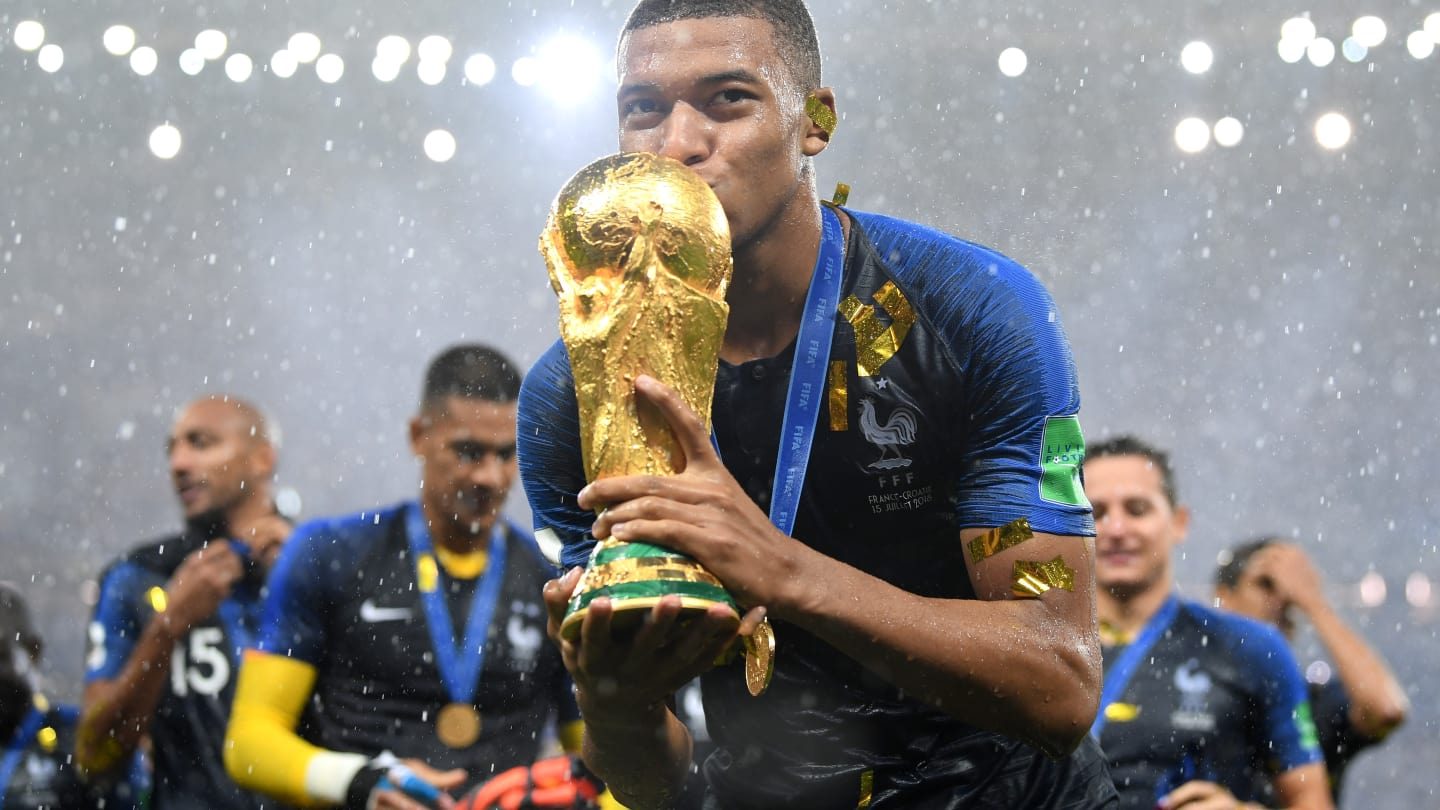
This is Part 4 of Rappler’s World Cup 2022 series.
- Part 1: Group of Underdogs
- Part 2: Group of War
- Part 3: Group of Living Legends
Group D – Australia, Denmark, France, Tunisia
In pre-Christian Viking mythology, the souls of warriors who die in battle are gathered by Odin, the god of war, and brought to a special hall called Valhalla in Asgard the heavenly realm. On June 12, 2021, Valhalla briefly gained another warrior.
In the 42nd minute of Denmark’s opening match against Finland in the European Championship, in front of a home crowd at Copenhagen’s Parken Stadium, limited due to the pandemic, Danish superstar midfielder Christian Eriksen inexplicably and suddenly collapsed on the field. No other players were near him, and he had just received a throw-in with the inside of his foot like any professional footballer does thousands of times in the course of a single match.
I was one of the millions of viewers around the world witnessing this horrifying sequence unfold on live television. I sat glued to the screen as emergency medical personnel began administering CPR first and then the defibrillator, his teammates encircling the spot where Eriksen lay, a Viking ring to protect his privacy just inside the far touchline, anguish in their faces and those of the Danish and Finnish fans in the stands. The sight of Eriksen’s torso shuddering with every jolt of the defibrillator was enough to bring tears of grief to many eyes, including my own, fearing the worst.
As a child prodigy, Eriksen was scouted by the biggest-name clubs in Europe like Real Madrid, Barcelona, Chelsea, Milan, and Manchester United. Even in his youth, Eriksen already showed the astute sagacity of a master midfielder, forgoing opportunities with these glamorous clubs, discerning that he need not go far outside Scandinavia to find the best developmental system in the world and signed on with the renowned Ajax academy.
It wouldn’t take long for Eriksen to debut for the Ajax senior squad and then the Danish national team before the end of his first full professional season, and barely 18 years old became the youngest player at the 2010 World Cup in South Africa.
The prototypical midfielder, Eriksen soon became a key player in Ajax’s revitalization to the top of the Eredivisie. He subsequently transferred to Tottenham Hotspur, where he put up his most impressive numbers and became best friends with Harry Kane. Together, they would lead Spurs to the European Champions League final.
After eight seasons in England, Inter Milan came calling, where he played a key role in capturing the Serie A title in his second year with the club. By the time he hit the pitch against Finland on Philippine Independence Day 2021, Eriksen had amassed over a hundred club goals, and was the Danish national team’s leading scorer among active players with 36 tallies in 109 caps.
Clearly, Eriksen’s meteoric career was still on the upward swing when he lay motionless on a stretcher being carefully wheeled off the field by medical staff, escorted by his teammates holding up a Finnish flag, which the opposing team had lent them to shield the camera angles as the entire stadium watched in silent shock, reminiscent of how Viking warriors must have honored their fallen.
The match was suspended until later in the evening when UEFA decided it had to resume. The wait was excruciating. Inside the stadium, the Finnish started chanting Eriksen’s name, joined in by the Danes. Finally, information on his condition began to trickle in. It was announced that Eriksen was awake in the hospital. Finland ended up winning 1-0, but there were no celebrations after the final whistle, only a solemn march off the pitch by both sides. It was clear in all the players’ eyes they were shaken and in a state of heartbreak and distress.
In the next couple of days, details of what transpired became public and was the story of the tournament. Eriksen had suffered a sudden cardiac arrest. At 29 years old, at the peak of his physical fitness, his heart stopped beating. By all accounts, he survived this ordeal because of the quick-thinking of captain Simon Kjær, who sprung to action, sprinting from his defensive back position and immediately rolled his friend onto his side. The medical staff on hand at the stadium and the team doctor all worked together to save Eriksen from the clutches of death.
Eriksen was only briefly welcomed in Valhalla that day, and then immediately turned away like he had arrived way too early. We Christians see his resuscitation as nothing short of a miracle.
Even more miraculous has been Eriksen’s comeback. While in hospital, he underwent an operation implanting a cardioverter-defibrillator device designed to automatically jumpstart his heart if this happened again. A few months later, he began recuperative training. Before the world knew it, Eriksen had signed a short-term contract with Brentford in the top flight of England, making an immediate impact on the field.
In just a little over a year from the day his heart stopped beating, he was back in the glamorous big-time with Manchester United on a multi-year contract. Since Eriksen’s return to international duty this past March, Denmark has been on a tear, sweeping France in the Nations League, including a 2-0 thrashing of the defending world champions in Parken Stadium, narrowly missing the final round by a single point behind group winners Croatia. I have a feeling Eriksen’s comeback story is far from over, and Denmark’s Viking horde, risen from the dead are going to pillage Group D, defending champions and all.
In the history of the most watched sporting tournament in the world, only twice have the reigning champions repeated, and they both happened in the previous century. The most recent occurrence was by Brazil in 1958/1962, during the heyday of the greatest player ever to play the game. Prior to that, Italy repeated in the second and third editions during pre-World War II years when the tournament was far from a global event.
In 1998, Brazil returned to the final after their 1994 triumph, but were summarily blown out, 0-3, by hosts France. Since then, there have been no defending champions getting that far in the succeeding World Cup edition.
After beating Brazil in that final, France famously flunked out in the group stage in 2002, scoring no goals and managing a draw against Uruguay. The eventual 2002 champions Brazil got shut out in the quarterfinals by France again in 2006. Italy raised the trophy in that year, but then in 2010 drew with Paraguay and New Zealand before getting eliminated in their last group game by Slovakia.
After Spain dominated the 2010 tournament with their masterful indefensible tiqui-taca strategy, they were trounced by Holland in 2014, shut out by Chile, and their 3-0 win against Australia was insufficient to save them from a first round departure. The Germans went on to collect their fourth world championship that year after handing Brazil their worst defeat in recent memory to bounce the hosts out of the semifinals, 7-1, and then shut down Messi and Argentina in the final.
In Russia 2018, Mexico goalkeeper Memo Ochoa played his career-defining game making save after spectacular save to repel the German defending champs in their group opener. After squeaking by Sweden, Germany needed a win against South Korea for a berth in the round of 16. The Koreans posted perhaps the greatest World Cup victory by an Asian team by sending the Germans home with a 2-0 cremation.
Are you getting my drift here? Since the 1990s, four out of six world champions disintegrated in the group stage. There have been no repeat champions since 1962. To put it succinctly, don’t bet on France in 2022.
That 1962 Brazilian team was a one-in-a-millennium generation, a perfect confluence of greatness. Even though Pele was sidelined early in the group stage, he was the kind of player who was so great, he made other players around him rise to greatness.
There has since not been, nor probably ever will be, a generation with the likes of Didi, Garrincha, Amarildo, Vavá, Zagallo, Gilmar together on the same side. No one disputes that this French squad has some great players in Mbappé, Benzema, Griezmann, Giroud, Dembélé, Varate, and Lloris, but I can’t see that special quality of greatness as a unit.
France has in fact been underperforming lately. In the European Championship last year, they were eliminated in the round of 16 by Switzerland. In the current European Nations League, they finished third in the group behind the aforementioned inspired Denmark, winning only one out of six matches with a disastrous -2 goal differential. This was their performance as the defending champions of the competition’s previous edition. Need I say this could be a sign of things about to come?
This doesn’t mean I won’t be rooting for Les Bleus. In the absence of David Alaba and Austria this year, France’s roster holds the sole Filipino connection in Qatar. Backup keeper Alphonse Areola’s parents immigrated to France from the Philippines before he was born. Currently on loan to West Ham in the English Premiere League, Areola shot to stardom out of the Paris Saint-Germain youth academy.
He represented France internationally at youth levels, winning the U-20 World Cup in 2013, and excelled in loan stints to various clubs in France, Spain, and then England, where he became the second Filipino goalkeeper in Fulham’s history after Neil Etheridge. He returned to the PSG first team and performed so well for the French superclub that he earned a spot on the senior national team as second backup to Hugo Lloris in Russia 2018.
Areola holds the distinctions of having won a World Cup championship before earning his first international cap and the only Filipino to raise the trophy. Unless some catastrophic injury happens to the highly decorated Lloris, it is most likely we won’t see Areola off the bench at all in Qatar. However, with Lloris at 35 years old, Areola’s turn may finally arrive in 2026.
This is Tunisia’s sixth World Cup qualification. They’ve made a habit of leaving the tournament at the group stage. For the Eagles of Carthage, the round of 16 is the proverbial promised land. They won their opener against Mexico in their very first outing in 1978 and beat Panama in their last match at Russia 2018.
Sandwiched between those two victories, they tied four and lost the rest of their 15 total World Cup matches. Given the makeup of their group this time around, the Tunisians will have their work cut out for them in 2022.
One thing that will help their cause is some support from the local crowd who are quite familiar with two of Tunisia’s biggest stars. For 11 seasons now, Tunisia’s captain and most capped active player Youssef Msakni has excelled in the Qatar Stars League where he has scored 86 times in 146 matches with Al-Duhail and now Al-Arabi. Tunisia’s most experienced midfielder Ferjani Sassi has appeared 24 times for Al-Duhail.
The marquee matchup for Tunisia takes place when they face their former colonizers for the first time on a World Cup stage. In the race for colonial acquisitions between the European powers, France invaded Tunisia in the late 1800s and established a protectorate, effectively bringing the North African territory under French rule. For over half a century, France imposed a colonial administration and exploited Tunisia’s natural resources, suppressing movements for autonomy or independence that were not compatible with French ambitions in the region, and imprisoning their leaders.
Through a combination of armed resistance and shrewd negotiation lead by an intellectual elite, Tunisia eventually gained their independence from their French invaders in 1956 and formed a republic the following year.
Three-quarters of a century’s worth of fervor that lead to Tunisian independence will manifest itself on an 80 by 120 yards rectangle when Tunisia confronts France, who by this last group match day will be hanging on by a shoelace to avoid the World Cup champions’ curse.
Head coach Jalel Khadri will lead an inspired bunch. One good sign about Tunisia’s record in each of their World Cup campaigns is that they have yet to be swept; they may have been eliminated at every group stage, but they have always managed to avoid losing every match, and consistently finished with at least a draw or a win in three games.
The match against the French will be that one game for Tunisia. Msakni will inspire his crew to rise to unprecedented heights, like they have done in the Africa Cup of Nations for which they have qualified a record 15 consecutive times, and they will either draw or beat the defending champions, knocking them out of the top seed in the group going into the round of 16. And Denmark will thank them for it.
Like the Tunisians, the Aussies have struggled historically in progressing to the knockout stage. Australia is one of the few countries in the world where soccer is not the most popular spectator sport (an exclusive club in which the Philippines is also a member, even though the typical Filipino athlete’s physique is perfectly suited for the game – don’t get me started on this). That designation by far belongs to Australian Rules Football.
From 1980 to 2004, Australia were perennial finalists in the Oceania Football Confederation, winning it outright four out of six times. The top division A-League was formed in 2004 after the National Soccer League started in 1977 and then fizzled out before the turn of the century.
The A-League has made some incremental progress since its inception, and now has 1a professional clubs based around the country, plus one in New Zealand. In 2006, in search of wider and stiffer competition in an effort to up their game, the Australian soccer association switched to the Asian Football Confederation. In the four Asian Cups since they joined, the Aussies have gone into the knockout rounds, capturing the continental trophy in 2015.
More than half of Australia’s World Cup squad have wandered around Europe, like veteran Aaron Mooy now of Celtic in the Scottish top flight. Mooy started off with St. Mirren, then returned to Australia for several seasons with Western Sydney and Melbourne in the A-League. He was signed by Manchester City in England, but then immediately loaned out to Huddersfield Town and then Brighton & Hove Albion in the Premiere League.
In 2020, Mooy signed a contract with Shanghai in the Chinese Super League before joining Celtic two years later. From the A-League, defender Aziz Behich spent seasons in Turkey’s Super Lig, Holland’s Eredevisie, back to Turkey and now under contract with Dundee United in Scotland. The most decorated active Socceroo is captain Matthew Ryan, who has also been around. After starting his pro career in the A-League, Ryan signed with Belgian mega Club Brugge followed by moves to Valencia and back to Belgium on loan with Genk, on to Brighton & Hove Albion and then Real Sociedad in Spain again before joining FC Copenhagen in Denmark. Forward Matthew Leckie is their most capped player and leading scorer. Leckie went to Germany and played for four different clubs in a span of eight seasons before returning to the A-League.
The careers of these veteran Aussie players, all of them now in their 30s, reflect the Australian soccer identity. Even Harry Kewell and Tim Cahill, arguably the two greatest players to have come from down under, wandered from one country to another throughout their respective careers like they were trekking around the world, the former with six clubs in four different countries, and the latter with seven clubs in five countries in four different continents. Australia are searching for their place in the soccer universe. They have moved from one confederation to another, and their stars travel the world looking for meaning and purpose on the pitch.
Many of these Australian veterans have been around long enough to know that the Socceroos haven’t escaped the group stage since their quarterfinal showing in 2006, posting one win, two draws, and six losses on their way to a -12 goal deficit in their last three outings. To think that they went to Russia 2018 as defending Asian champions, then managing just a tie and losing two before heading back down under, is disheartening as an Asian.
It’s quite unfortunate that the Socceroos were drawn back into a group with the same two European opponents as last go-round – France and Denmark. Statistically however, we will see if it turns out to be advantageous to the Aussies that one of their opponents is the defending champions.
If coach Didier Deschamps fails to prevent the French from succumbing to the post championship doldrums, then that second place spot in Group D will be up for grabs, and Australia may just discover what they’ve been wandering the universe in search of.
Group D standings prediction
- Denmark
- France
- Tunisia
- Australia
(Next: Part 5 – The Hungriest Group)
– Rappler.com
Kokoy Severino is a career educator and nationally certified youth soccer coach in the United States who now lives in his home country of the Philippines. For over 23 years, he implemented the beautiful game as a gang-intervention program in high-poverty urban school districts in the Greater Houston area of Texas. He has also worked with economically-disadvantaged communities in the Philippines, using football to mentor youths out of poverty. He is on the coaching staff of the Football for Peace movement, the Elmer Lacknet Bedia Football Academy, and a core member of Initiatives and Hearts for Indigenous People, a collective of volunteer soccer coaches who work with youths in poverty, particularly among the marginalized ethnic minorities of the Philippines.
Add a comment
How does this make you feel?
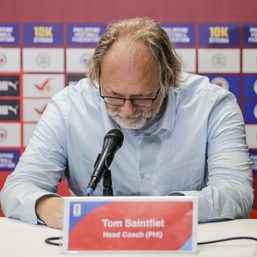
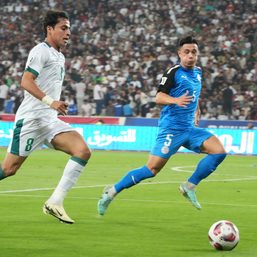
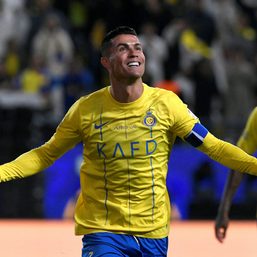
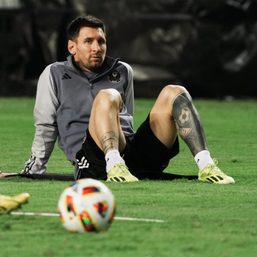
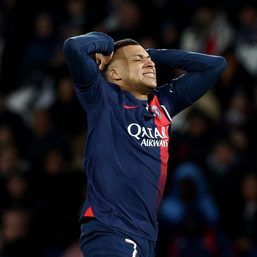
There are no comments yet. Add your comment to start the conversation.